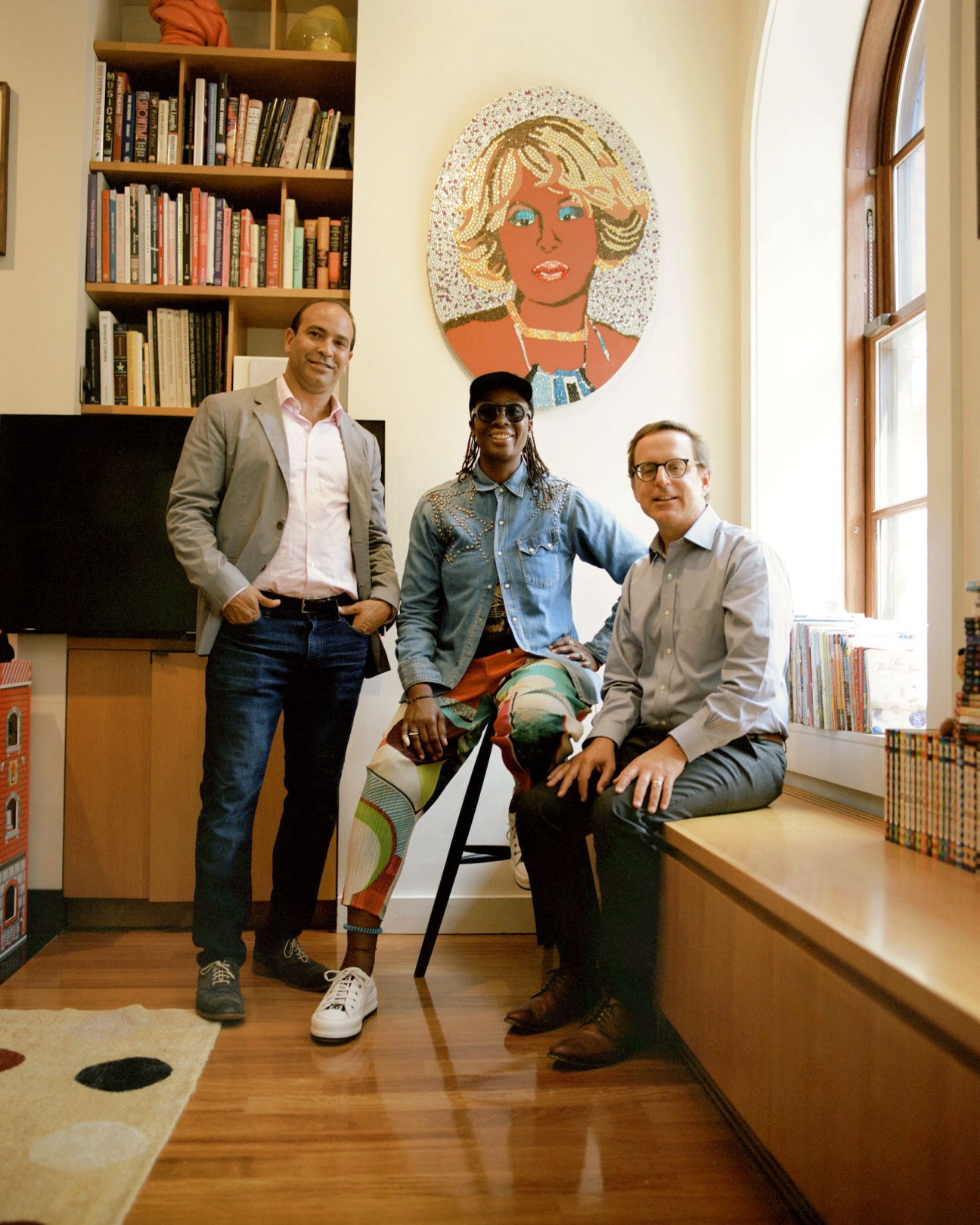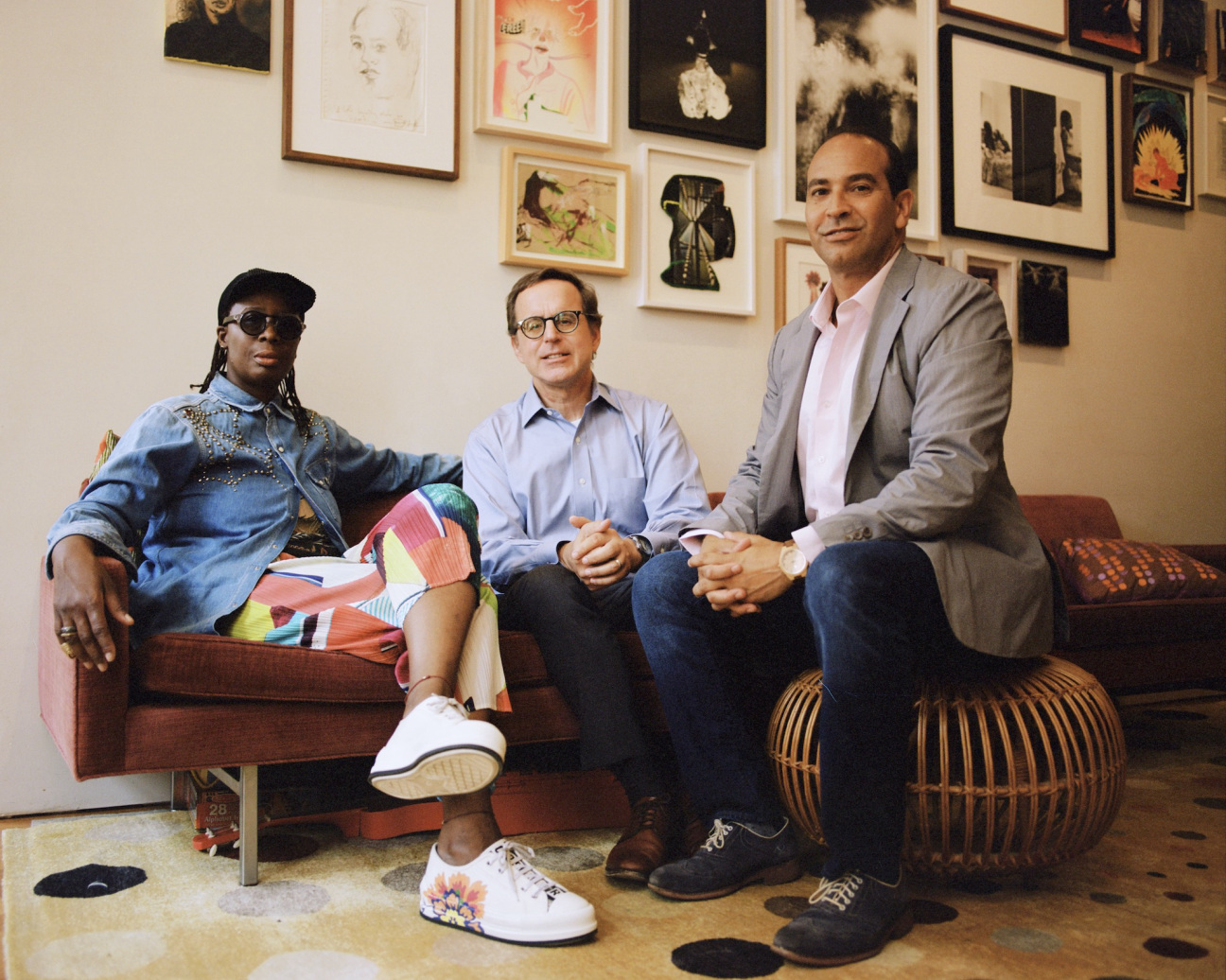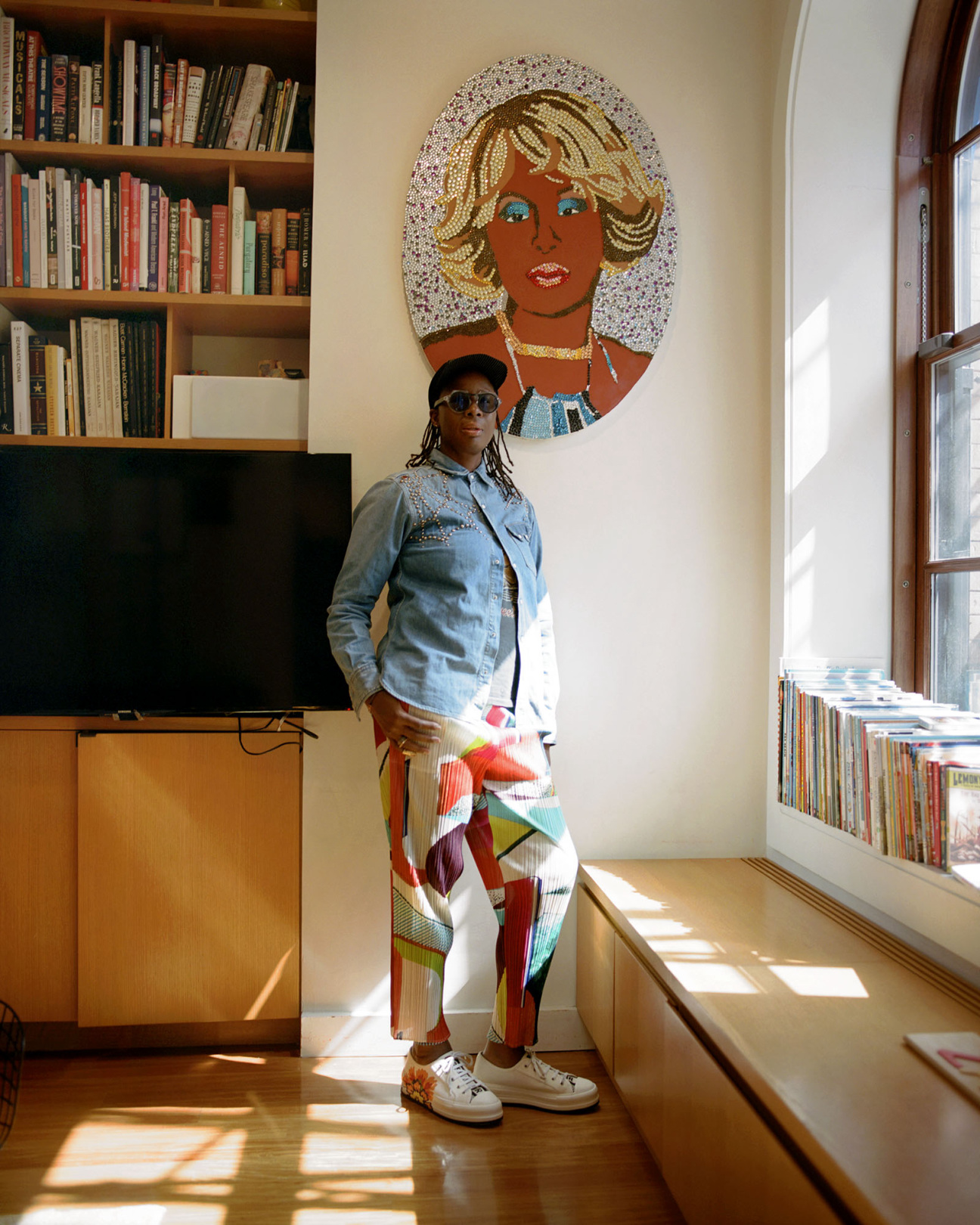
Art school is a rite of passage for many promising talents, but the experience can often feel more like a dry run of the competitive art-world gauntlet than a safe haven for self-discovery and creative evolution. This year, three Yale alumni—attorney Carmine Boccuzzi, arts patron Bernard Lumpkin, and artist Mickalene Thomas—have committed to fostering the latter experience at their alma mater.
Boccuzzi and Lumpkin first encountered Thomas as collectors of her work, which was later featured in the traveling exhibition “Young, Gifted and Black: The Lumpkin-Boccuzzi Family Collection of Contemporary Art.” It wasn’t long before the trio recognized their shared dedication to nurturing the careers of emerging artists—especially those who are often overlooked by prevailing art world institutions.
This July, Boccuzzi, Lumpkin, and Thomas established the Mickalene Thomas Scholarship at the Yale School of Art. The monetary award, a culmination of their shared vision, also offers one student per year the opportunity to benefit from Thomas’s guidance and mentorship.
The announcement of the artist’s eponymous scholarship is tied to this month’s opening of “Mickalene Thomas / Portrait of an Unlikely Space,” an exhibition co-curated by Thomas at the university’s art gallery. The show, which runs through the end of the year, juxtaposes pre-emancipation-era portraits of Black Americans with works by contemporary artists. To mark the occasion, the trio reunited for a conversation about building a legacy that honors the past as much as the future.
Bernard Lumpkin: Mickalene, you and I are part of an amazing community of artists, curators, educators, writers, patrons, and collectors who champion artists of African descent. We share a mission to elevate these voices in the contemporary art world, each using our own platforms and strengths. You have used your success to provide opportunities for others, which resonates with me as a patron and collector. I aim to use the visibility I have—through my support of institutions like the Studio Museum in Harlem, the Skowhegan School of Painting and Sculpture, and the Yale School of Art—to inspire others to extend their support beyond merely acquiring work.

Carmine Boccuzzi: Bernard has shown me what can happen when you act as an art patron, support younger artists, and learn about how the world of today is tied into past historical moments and people. It’s enriching to be around people who care about art and art history, like when we went to see Mickalene speak at MoMA about the Matisse painting The Red Studio [1911]. You have both helped me think about building community and being in dialogue with other collectors.
Mickalene Thomas: It begins with like-minded people wanting to address a void. As Toni Morrison says, if you don’t have that place, create it yourself. Making space is vital to my practice, because creating art simply isn’t enough. I want to see others in my community grow, too. I never felt comfortable being the only one at the table. I want dialogue with peers—like Derrick Adams, Wangechi Mutu, Kehinde Wiley, and Clifford Owens—who also navigate these spaces and support one another. When I reached a point of influencing institutions, I realized I could use my platform to educate artists about community. No one wants to stand alone.
This instinct to make space is something we share. I first encountered you both through the Studio Museum in Harlem, and I was inspired by your efforts. Your support was never ostentatious—it was stealthy and genuine. You were always welcoming a diverse range of artists to your homes and championing our work, regardless of our career stage.
Lumpkin: For you, art is not just a practice—it’s a way of advocating for change. You’ve engaged institutions like Yale to accomplish your wider vision of what an artist can do: this idea of the artist as citizen, advocate, activist. You’ve set an amazing example for a new generation of artists.
When Yale approached us, we were already supporting the School of Art program through scholarships and service on its task force. I had advised Yale on another project that Mickalene did there, a mural in one of the new residential colleges in honor of Pauli Murray.
Boccuzzi: The mural that Mickalene did at Pauli Murray College was so meaningful to me, because Bernard and I met as students at Yale. Murray got her higher law degree at Yale Law School, and I went to Yale Law School, too. Seeing what Mickalene did, which is so gorgeous and stunning, was a revelatory moment.

Thomas: It’s interesting how life comes full circle. I had discovered Pauli Murray prior to being invited to create this mural, because I was researching African American women activists who were dealing with gender equality. She seemed like this nonbinary force, an activist and scholar who worked through the Civil Rights Movement. The fact that she became the first African American person to have a college in her name at an Ivy League school seemed like a great opportunity to celebrate her. She was a shapeshifter far ahead of her time—she was even an Episcopal priest. I consider her a distant mentor, influencing how I envision my own legacy.
Lumpkin: That’s also reflected in the exhibition you’re curating at the Yale University Art Gallery this fall: “Mickalene Thomas / Portrait of an Unlikely Space.” Yale knew of our special relationship with you. The opportunity to join forces and support emerging artists, the university’s art program, and the mission of elevating artists of African descent felt unmissable to us. I hope it sets an example for other patrons and collectors to impact future generations of artists by supporting their education.
Thomas: There are many things I imagined accomplishing in my life, but a scholarship was not on my list. When I received the phone call, I was speechless. It’s beyond the idea of a legacy. It validates my thoughts, actions, and beliefs. I know the struggles I had in school, so I hope other patrons follow your lead, because students need space to create without stress and compromise.
The scholarship is a concentrated engagement with one student over their tenure at Yale. I’ve extended my mentor services to the recipient while they’re in school, and after school through my platform Pratt>FORWARD [a program at the Pratt School of Art]. The scholarship recipient will always have a home in me, and can rely on my team as advocates. Artists often find themselves in conflict because they lack this type of support to guide them.

Lumpkin: What did mentorship look like for you as a young artist?
Thomas: My mentor was Rahimah Lateef. She was a collector, friend, and supporter who introduced me to Carrie Mae Weems’s work. This became instrumental and transformative in my practice. Rahimah was also my first patron. When she needed to sell some work, she gave it to my gallery, Lehmann Maupin. Bernard and Carmine
ended up with this painting, Mary J. Me [2002], showing the serendipitous connections in my life.
Lumpkin: We’re in a moment with increased visibility for Black artists—there’s more support and infrastructure. Yet we’re aware that we’re building for the next generation without knowing whether the world will be as receptive. Regardless, we will always be creating space and opportunities. While I often lead the conversation, Carmine’s partnership is integral. The best things happen with teamwork, and Carmine, your support and advocacy is invaluable.
Thomas: You both have carved out space in monumental ways that enable artists like me to continue to achieve what we set out to do. Octavia Butler’s words come to mind: “All that you touch / You Change. / All that you Change / Changes you. / The only lasting truth / Is Change.” I know that the person who receives this scholarship will be incredible. They’ll take this opportunity and run with it, knowing they have a support system behind them. Meanwhile, Kymberly Pinder [dean of the Yale School of Art] is working towards making the MFA program free for all students. This will offer an unparalleled chance for students to focus on creativity, and the theoretical and conceptual process of becoming an artist.
Lumpkin: That’s absolutely true. Being at the Yale School of Art presents unique challenges and pressures from the commercial side of the art world. The goal of the scholarship—and the support provided by the Yale School of Art task force—is to extend the security and community of the school, allowing artists to continue creating work without the immediate pressures of the commercial art world. Mickalene understands these dynamics and can help students navigate the transition while preserving their artistic purpose. It’s crucial that this mentorship comes from someone who has experienced both the academic world and the demands of the professional art world.










 in your life?
in your life?

